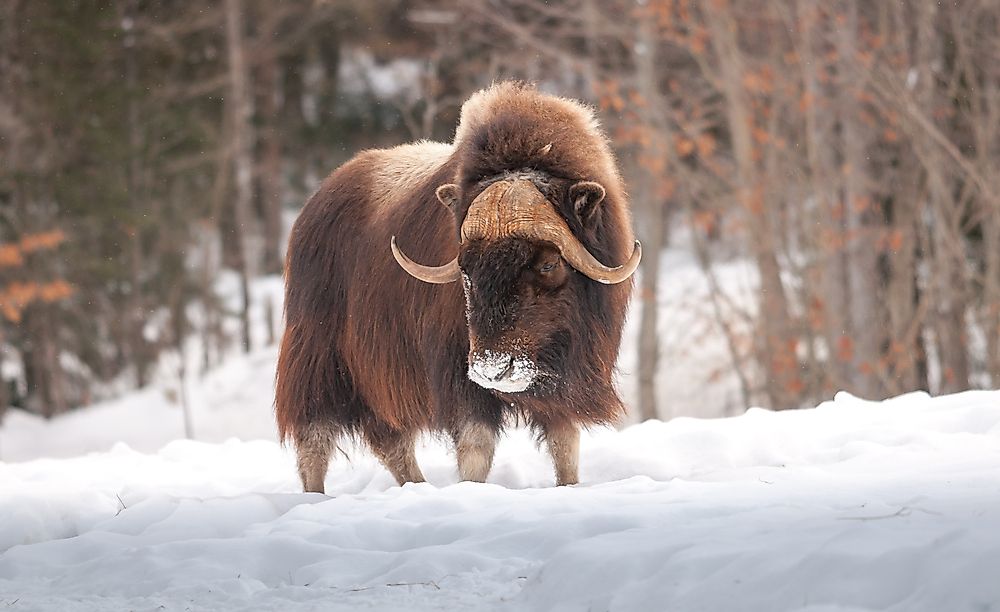Muskox Facts: Animals of North America

Muskoxen are Arctic mammals. The animals live mainly in two places, the Canadian Arctic of the Northwest Territories and Nunavut, and in Greenland. Some muskoxen have been introduced in other parts of the world as well like Siberia, the Scandinavian Peninsula, the US’s state of Alaska, and the Canadian territory of Yukon.
Behavior
Typically, muskoxen (plural for muskox), exist in groups of twelve to twenty-four during the winter while in the summer the range is eight to twenty in the summer. Unlike most animals of the wild, muskoxen hold no territories but use preorbital glands to mark their paths. As is the case with most social creatures, there is a hierarchy in the herd with mature oxen dominating the younger ones. Dominant oxen get the best of everything in the herd ranging from the best grass to the females. There are many ways to show dominance in a herd. For example, a bull could rush another one with its head and warn the weaker bull to give it a chance to stay and be beaten or move away. Other ways include roaring, pawing the ground, swing their massive heads, kicking of underlings, and sometimes have mock sex with them including sniffing their genitalia. Subordinate oxen sometimes challenge the dominant ones to become dominant.
Diet
As summer approaches, muskoxen migrate to wet regions like shallow lake basins or river valleys while the winter forces them to higher grounds in order to avoid deep snow that accumulates in the lower regions. Muskox diet is mainly vegetation including woody plants, grass, arctic willows, mosses, and lichens. During the summer when food is in abundance, nourishing and delicious grass is available while during the harsh winter conditions, willows are eaten the most.
Physical Description
All muskoxen have long and curved horns with a small tail covered with fur and measuring 3.9 inches long. Both males and females have a shoulder height of between four to five feet. Females are shorter in length (from 4.4 to 6.6 feet) while bulls are larger (from 6.6 feet to 8.2 feet). Adults weigh between 400 to 900 pounds and an average of 630 pounds. Muskoxen have thick woolen coats (usually a mixture of black, brown and gray while white muskoxen are rare), enormous heads, and a strong musky scent which males release during mating.
Reproduction
Late June or the onset of July signals the mating season. Dominant males fight each other in order to establish harems consisting of about seven females together with their young ones. Fighting involves rubbing preorbital glands first then assaulting each other with their heads repeatedly until one of the bulls quits. The losers leave the group to form their group or live in solitary. Gestation is a period dominated by females who make most decisions in the herd like the distance the heard travels in a day. Calves are born after eight or nine months and are taken care of the heard for the first two months after which they start feeding on plants and receive less care.











